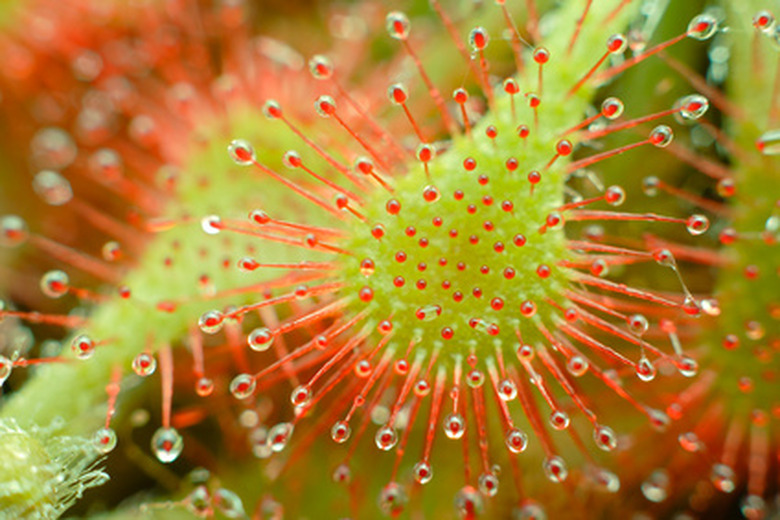Sundew Facts
Sundew plants originated on the cape of South Africa. The plant is now found growing wild on every continent except Antarctica. Sundew's scientific name is Drosera, which comes from the Greek "drosys," meaning "dew." The sundew is a carnivorous plant that traps and eats living prey. According to the Botanical Society of America, Charles Darwin found the sundew so interesting that he dedicated 285 pages of his book about carnivorous plants to the experiments that he performed on the sundew.
Description
The sundew is a small carnivorous plant with heads that are approximately the size of an American quarter. The plant is bright green, and the head has multiple stalks that are either green or red. Each thin stalk has a droplet of sticky mucilage at the tip. Sundew takes its name from these droplets of mucilage, which give the plant the appearance of being covered in dew.
- Sundew plants originated on the cape of South Africa.
- Sundew takes its name from these droplets of mucilage, which give the plant the appearance of being covered in dew.
Growing Conditions
Sundew grows naturally in tropical, wet conditions such as marshes, river or lake banks, and bogs. They prefer acidic soil for their roots. Because they prefer acid soil, they do not absorb many nutrients from the soil. Sundews get their nutrients from the insects they eat.
Trapping Prey
Sundew plants trap their prey with their sticky appendages. When the insects are ensnared by the plant, the sundew curls its edges around the prey. The plant does not fold in half like a Venus fly trap, instead the plant curls just enough to contact the insect with more of the hair stalks on its surface. The hairs of the plant are glands that produce digestive juices—including protease and phosphatase—to break down and digest the insects.
- Sundew grows naturally in tropical, wet conditions such as marshes, river or lake banks, and bogs.
- Sundew plants trap their prey with their sticky appendages.
Effects of Digesting Insects
According to the Botanical Society of America, Darwin's studies proved that sundew plants that consumed more insects produced more flowers and seeds than those that were not fed any insects. Because the sundew gets its necessary nutrients from its insect diet, plants that do not eat insects will not grow and produce properly.
Medicinal Uses
According to Finland's AAPA, sundew's historic use has remained effective in modern times. Tea made from the dried plant is prescribed by herbalists for coughs and bronchitis as the plant's leaves contain antimicrobial properties.
